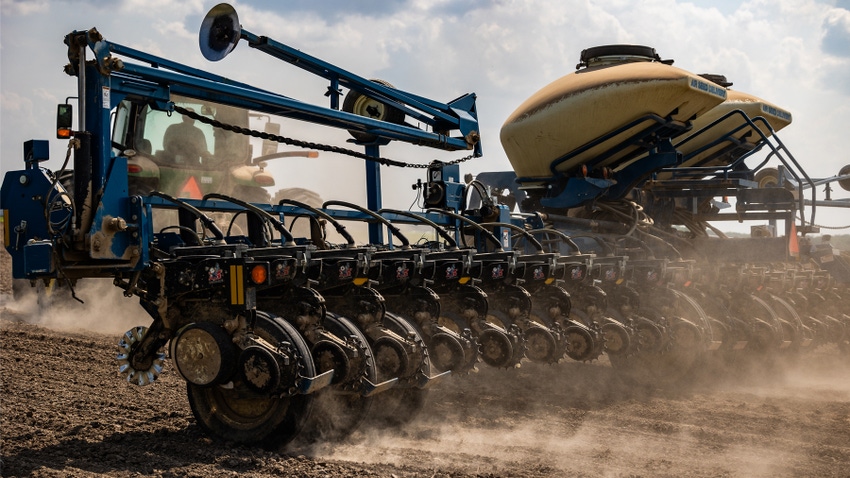April 11, 2024

While spring planting season in Iowa is always busy, take the time to check the pressure on your planter’s gauge wheels when starting each field. Research shows getting the correct downforce pressure will create the best possible seed furrow for top yields.
“Setting the proper downforce pressure will depend on the type of downforce system on your planter,” said Doug Houser, Iowa State University Extension digital ag specialist.
For example, using spring, air or hydraulic downforce systems are all commercially available options. The goals of each system are the same. You want to get the correct amount of force on the gauge wheels to keep the row unit in the soil, maintain the correct seed depth and create a quality seed furrow.
Downforce adjustment
Adjusting downforce was one topic covered at this year’s Planter University meetings in February, presented by the Digital Ag Innovation Lab at ISU Extension. The instructors used portable containers filled with soil and a planter unit mounted on a mobile cart to demonstrate how using different downforce pressures causes varying firmness of the seed furrow.
As Houser explained, the goals for downforce include:
Maintaining ground contact. Keep the row unit in the ground at the set depth.
Setting soil structure. Press out air pockets and set soil density next to the furrow.
Structuring furrows. Make sure the furrow holds its structure while seed is placed at the bottom; then, the furrow is closed from bottom to the top by the closing system.
“The best practice when you start to plant a field is to put the planter in the ground and start planting seed like you normally do in the planting operation,” Houser said. “After you have planted for at least 50 feet, then stop and get out of the tractor and examine the seed trench structure.”
Examine seed furrow
The first place to start looking at the furrow structure is between the gauge wheels and the closing system, Houser said. “If there are high amounts of soil in the furrow on top of the seed, then downforce should be increased to improve furrow integrity.”
In some soil conditions, applying more downforce will not improve the quality of the trench structure, Houser noted. For example, in extremely dry and sandy soils, reset the downforce to the last one that made a noticeable improvement in the trench structure.
“Downforce setting requirements will change and need to be monitored often as soil and moisture conditions change within a field, as well as across different fields planted on the same day,” Houser said. “The goal is for the planter operator to determine the correct gauge wheel load for any given field condition, and to adjust as needed.”
A second option is to evaluate your planter’s downforce settings by using a small chain, wire or other device that can hold up the closing wheel system, just while you are evaluating downforce settings.
“This allows easier access to assess the seed furrow in more detail without having to do the inspection down through the gauge wheels,” Houser said. “Also, this procedure can be useful when the operator is troubleshooting a single row-unit issue.”
For additional information and resources on equipment and technology, visit Digital Ag Extension.
Read more about:
PlantersAbout the Author(s)
You May Also Like






